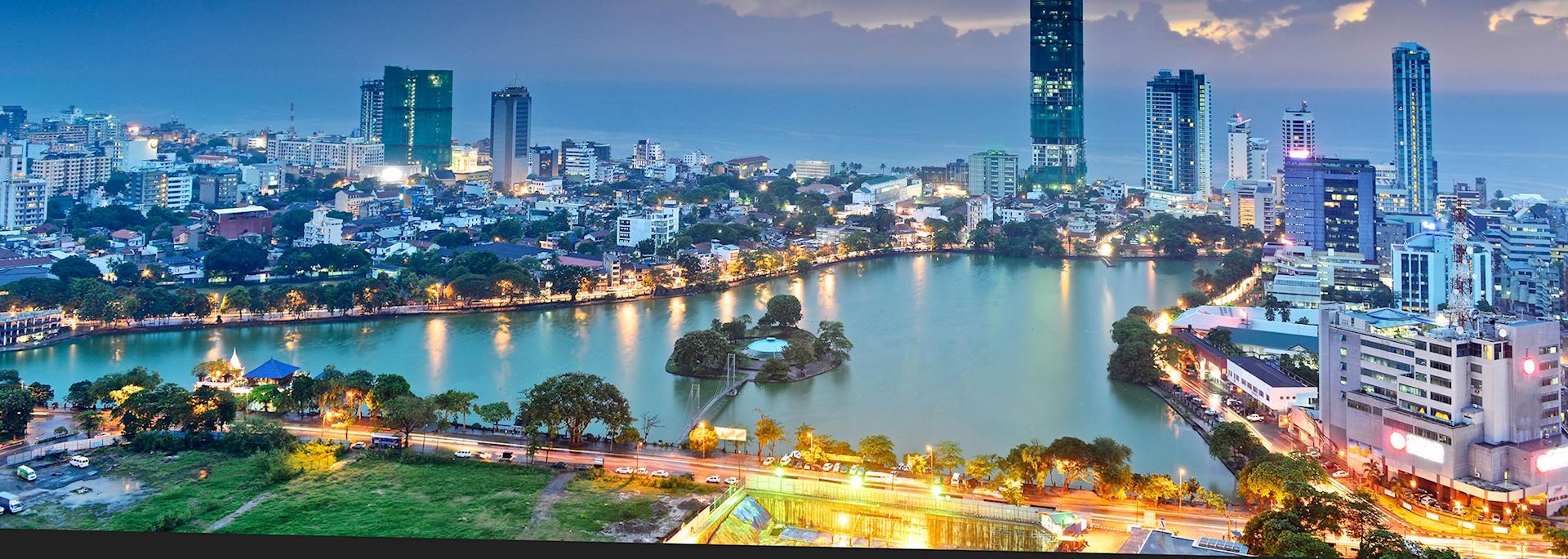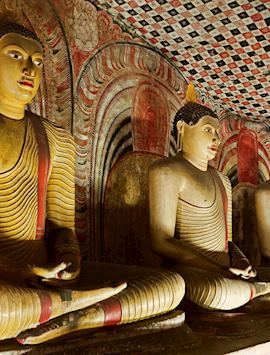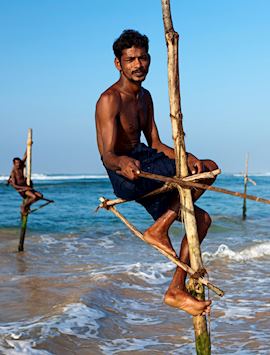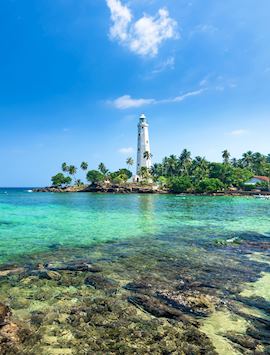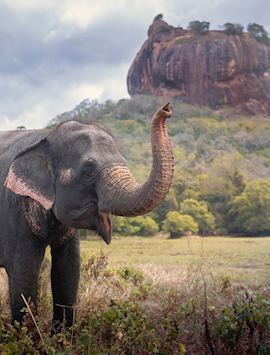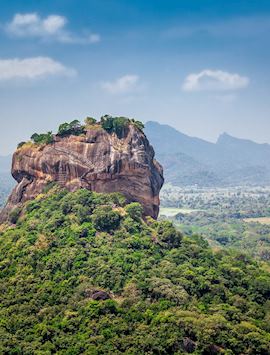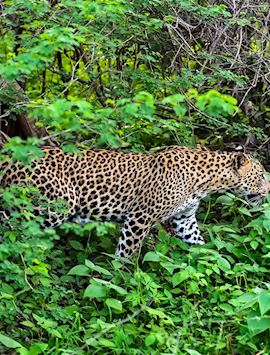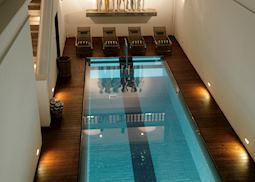Jump to:
If you’d like to get to know contemporary Sri Lanka, you’ll find it best displayed here, in this phoenix-like capital that’s rising from the civil war of the 1990s. Colombo is now a dynamic city, where British and Dutch colonial architecture brushes shoulders with cutting-edge skyscrapers, stylish seafood restaurants and busy temples — that are all very much Sri Lankan.
Although it only became Sri Lanka’s capital in 1815, with the arrival of the British, Colombo has long been an important seaport for Muslim traders, and Portuguese and Dutch settlers.
To get a firm grounding of its history, you can take a walking tour with a local historian, who’ll focus on the area known as Fort. While there was once a Portuguese-built fortress here, it was demolished in 1870, and Fort is now simply the name for Colombo’s central district.
The British-built administrational section of Fort was cordoned off during the civil war, but it’s now open again and restoration work is in progress.
You can wander past the honeyed neoclassical Old Parliament Building, the white columns of the General Post Office and the Cargills & Millers Building, originally a British department store that wouldn’t look amiss on a London high street.
From here, you could head to the Dutch area, which focuses around the Dutch Hospital. This 17th-century complex is one of the oldest surviving buildings in the city and has been carefully restored. Its colonnaded arcades host shops selling artisan crafts — thickly woven, vibrantly dyed textiles are a specialty — and caf茅s serving Ceylon tea alongside cocktails.
You’ll also find the Ministry of Crab, as well as a range of other fashionable restaurants, in the Dutch Hospital. This temple to crustaceans serves crab in ten sizes, as well as a supporting cast of prawn, lobster and tuna dishes.
There’s a competitive edge to restauranteering in Colombo, from hotels perfecting rooftop fine dining to exclusive 12-seater sushi restaurants (we recommend Nihonbashi) popping up across the city.
For something more low-key, sample a samosa or some deep-fried crab from one of the street-food stalls that congregate on Galle Face Green. This long strip of lawn that runs alongside the coast has been a gathering point in the city since Victorian times, and you’ll still see families flying kites and paddling in the sea.
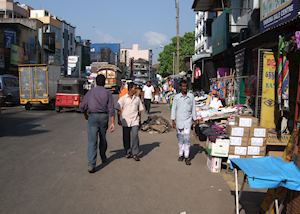 It’s also worth making time to visit Pettah Market, the country’s largest marketplace. You’re almost guaranteed to lose your bearings, so we advise taking a tour with a guide. Each street is neatly arranged into specialties, from jewellery to potatoes, and there’s a constant hum of sales patter. Look out for wood apples — a soft, off-white fruit shaped like a ball. They might smell like blue cheese, but they go into producing a popular sweet-and-sour juice.
It’s also worth making time to visit Pettah Market, the country’s largest marketplace. You’re almost guaranteed to lose your bearings, so we advise taking a tour with a guide. Each street is neatly arranged into specialties, from jewellery to potatoes, and there’s a constant hum of sales patter. Look out for wood apples — a soft, off-white fruit shaped like a ball. They might smell like blue cheese, but they go into producing a popular sweet-and-sour juice.
From Pettah, you’re within walking distance of the city’s ever-developing port, which is on course to becoming one of the largest in Asia. Take a wander around the district (which developers promise will become the mini-Dubai of Asia) and you’ll see skyscrapers alongside 200-year-old warehouses and busy shipping-container loading bays.
To the south of the city are five bright-green (well, depending on the season) stadia of grass. The neatest is R Premadasa International Cricket Stadium, known as SSC Cricket Ground and surrounded by a number of local cricket clubs and training grounds.
As well as a number of international games, the stadium plays a regular schedule of domestic fixtures, and its women’s team is gaining international traction.
Temples in Colombo
You’ll see a lot of temples across Sri Lanka, so it can be tempting to skip Colombo’s offering. But, the capital’s spiritual retreats are arguably the country’s most unusual.
Gangaramaya Temple is an unassuming dot on the map, a short walk from Galle Face Green. Walk inside, though, and you’ll find huge piles of glasses, gold ingots, toy elephants (plus a life-size model), baskets of food and gold-leafed books. Reverent of one of the oldest temples in Colombo, many Buddhists regularly donate their valuables there (seeing it as an act to reduce personal greed) — there are even a few cars.
Nearby is its sister temple, Seema Malakaya, a photogenic collection of Buddhas arranged on a promontory on Bere Lake. Visit at night to see it illuminating the surrounding water, as local residents visit after work.
Best time to visit Colombo
Sri Lanka has a complex series of monsoons, which can make weather predictions tricky. But, generally, the best time to go to Colombo is from January to April or from mid-July to September, when it’s dry and temperatures hover around 29°C (84°F) at midday.
who's been there
-
01993 838 92501993 838 335
- Make an enquiry
Suggested itineraries featuring Colombo
Our itineraries will give you suggestions for what is possible when you travel in Colombo, and they showcase routes we know work particularly well. Treat them as inspiration, because your trip will be created uniquely by one of our specialists.
Places near Colombo
- Wadduwa 19 miles away
- Negombo 20 miles away
- Bentota 37 miles away
- Adam's Peak 46 miles away
- Hatton 52 miles away
- Sinharaja Biosphere 59 miles away
- Kandy 60 miles away
- Nuwara Eliya 63 miles away
- Horton Plains 66 miles away
- Galle 67 miles away
- Pallepola 71 miles away
- Udawalawe National Park 77 miles away
- Bandarawela 79 miles away
- The Southern Coast 86 miles away
- Dambulla 86 miles away
- Tangalle 91 miles away
- Sigiriya 95 miles away
- The Cultural Triangle 98 miles away
- Minneriya National Park 103 miles away
- Anuradhapura 105 miles away
- Polonnaruwa 106 miles away
- Yala National Park 115 miles away
- Passikudah 137 miles away
- Trincomalee 148 miles away
- Jaffna 190 miles away
Photos of Colombo
Accommodation choices for Colombo
We've selected a range of accommodation options for when you visit Colombo. Our choices usually come recommended for their character, facilities and service or location. Our specialists always aim to suggest properties that match your preferences.
-
![Pool at Tintagel, Colombo]()
Tintagel
Colombo -
![Galle Face Hotel, Colombo]()
Galle Face Hotel
Colombo
